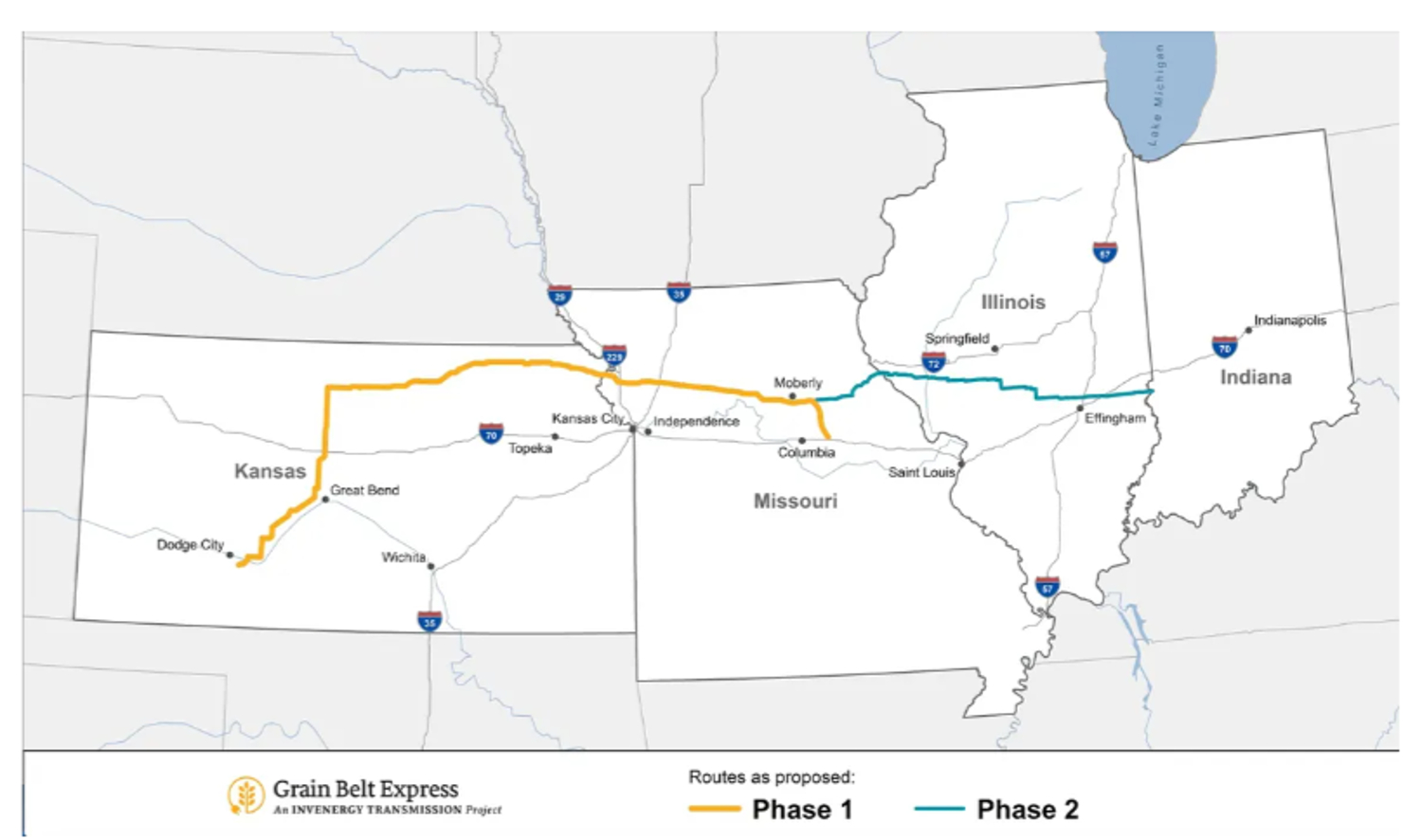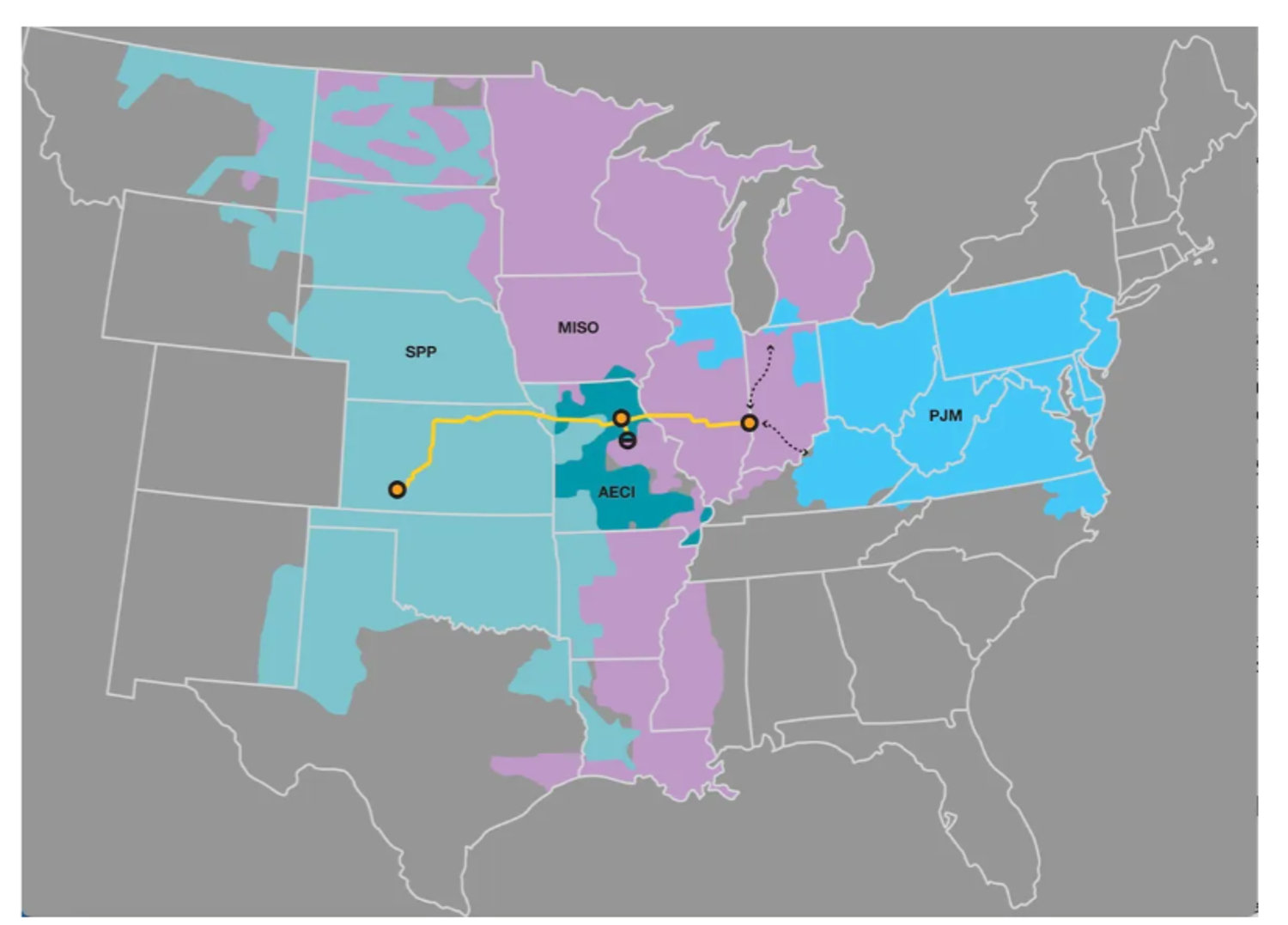Sign up for daily news updates from CleanTechnica on email. Or follow us on Google News!
There have been a lot of stories in the news lately about the transmission line network needed to move renewable energy from where it is plentiful to where it is most needed. Most of those stories talk about how necessary a transmission line can be and how building one is fraught with political challenges that may delay it for years. It’s why many renewable energy projects face up to a five-year wait to get approval to even connect to the grid. None of those proposed projects can start moving forward until the approval process has been completed.
The Grain Belt Express is a perfect example of the challenges that face those who want to build a transmission line in America today. The $7 billion dollar project is intended to carry 5,000 megawatts of clean energy from western Kansas, where wind and solar power installations are abundant, more than 800 miles to power grids in Missouri, Illinois, and several mid-Atlantic states.
The project has been stalled for more than a decade by regulatory battles, legal challenges, and an ownership change, but now one of the last hurdles has been cleared. Last week, the Missouri Public Service Commission dropped its objection to the transmission line after the developer agreed to deliver half of the electricity to Missouri before it travels on to other states.
Grain Belt Express Transmission Line

Courtesy of Grain Belt Express
The project as it stands now will be completed in two parts. Phase One will deliver electricity to Missouri. Phase Two will extend the transmission line to Indiana and beyond, but at the moment no date has been set for when construction of the second phase will begin. “What we received in Missouri last week is really a major milestone,” Shashank Sane, executive vice president of transmission at Invenergy, told Canary Media. Invenergy bought the project from its original developers in 2018.
Invenergy has acquired 95% of the land rights it needs for Phase 1, Sane said. It’s also actively negotiating for land rights to build the Tiger Connector — a 36-mile-long extension that will deliver high voltage alternating current to the Missouri grid. The connector is needed to satisfy Missouri policymakers’ demands for the project to deliver more power to the state in order to win approval. “They were very clear — resoundingly clear — on the benefits that Grain Belt can bring to utilities and customers in the state,” Sane said.
A Merchant Transmission Line
Grain Belt Express is one of the largest of a set of privately developed “merchant” transmission lines that could dramatically expand the capacity for moving clean energy generated in remote parts of the country to the population centers where it’s most needed, Canary Media said. Two other major merchant projects — the $3 billion TransWest Express line from Wyoming to California and the $5 billion SunZia Southwest project from New Mexico to Arizona — have also won key approvals this year that allow them to begin construction.
Most of the transmission in the country is built by utilities that must win regulator approval to pass the costs of construction on to their customers. Merchant transmission projects, by contrast, are built by independent developers with two key customers in mind — solar and wind power developers looking for a way to sell the electrons they will produce and the entities that want to buy that power.
“We need to not just site and permit the line and get all the rights we need,” Sane said. “We also need to figure out who’s going to pay for the line.” In the case of Grain Belt Express, Invenergy is in active discussions with a number of utilities interested in buying the power it will deliver, as well as corporations looking to buy energy that’s not only cleaner than what’s available from the grid at large but often cheaper, given the falling costs of building new wind and solar farms,” he said.
“It is unfortunate that it takes so long” for projects like Grain Belt Express to move ahead, said Christina Hayes, executive director of Americans For A Clean Energy Grid. “But I’m really glad to see this hurdle has been overcome. What we really need is an interconnected grid. While these onesies and twosies are wonderful in their own right, it can’t distract us from moving forward with a planned grid as well.”
The Transmission Line Cost/Benefit Analysis

Courtesy of Grain Belt Express
Transmission projects are complicated and expensive, but their benefits can far outweigh their costs, the published report said. Invenergy commissioned a study indicating that Grain Belt Express will deliver $11.2 billion in benefits from lower energy costs and a reduction in the need for investments in other clean energy resources to provide capacity during the summer and winter months when demand for grid power can exceed available supply.
The benefits of long range transmission extend beyond enabling more cheap clean energy, however. Power lines connecting different regions of the country can also reduce the risk of extreme weather taxing regional power grids beyond their capacity. In that light, the $11.2 billion in benefits from Grain Belt Express is “understating the value here,” Sane said. “What it does for reliability is not included.”
Notably, Grain Belt Express will connect three major grid regions — the Southwest Power Pool (SPP) and Midcontinent Independent System Operator (MISO) in the Midwest and the mid-Atlantic grid operated by PJM. Those grid operators could have shared more power to reduce the impacts of winter storms over the past decade if a transmission line was available to make that possible according to a 2021 report commissioned by the American Council on Renewable Energy.
Lawmakers in Congress have put forward a number of bills aimed at expanding the scale of inter-regional transmission projects like this. The Biden administration has proposed regulatory changes at the Department of Energy to speed transmission line development, and the Federal Energy Regulatory Commission is working on a long range transmission planning rule for utilities and grid operators. Just this week, the administration announced more than $3 billion in funding to modernize the grid and make it more resilient.
Federal loans and loan guarantees could also help long range transmission projects move ahead more quickly. Grain Belt Express has applied for a DOE loan guarantee that could reduce the cost of capital for the roughly $4 billion investment it plans for its Kansas-to-Missouri phase.
“The final piece — which is our bigger focus right now — is locking up the customers for the line,” Sane said. While he wouldn’t provide any details on that front, he did note that prospective customers “want a degree of certainty” that the project is actually going to get built. And with its last state approval now in place, “this project now has a clear path toward completion.”
The Takeaway
CleanTechnica readers are familiar with the idea that some folks resent all that clean energy zinging through wires far overhead while those below are locked out. It’s a valid concern. We tend to think more of these projects would see opposition melt away if they just cut in the locals for a piece of the action. While what Missouri did may seem a little like a holdup, it fits right in with that former Speaker of the House Tip O’Neill meant when he said, “All politics is local.”
On the other hand, Missouri has lots of land and sunshine and should be able to generate all the renewable energy it could possibly need if it wanted to. But it doesn’t want to, especially if it can get someone else to do the heavy lifting on its behalf. Score this a half a win for Missouri and half a win for Invenergy.
Have a tip for CleanTechnica? Want to advertise? Want to suggest a guest for our CleanTech Talk podcast? Contact us here.
EV Obsession Daily!
I don’t like paywalls. You don’t like paywalls. Who likes paywalls? Here at CleanTechnica, we implemented a limited paywall for a while, but it always felt wrong — and it was always tough to decide what we should put behind there. In theory, your most exclusive and best content goes behind a paywall. But then fewer people read it!! So, we’ve decided to completely nix paywalls here at CleanTechnica. But…
Thank you!
Tesla Sales in 2023, 2024, and 2030
CleanTechnica uses affiliate links. See our policy here.





